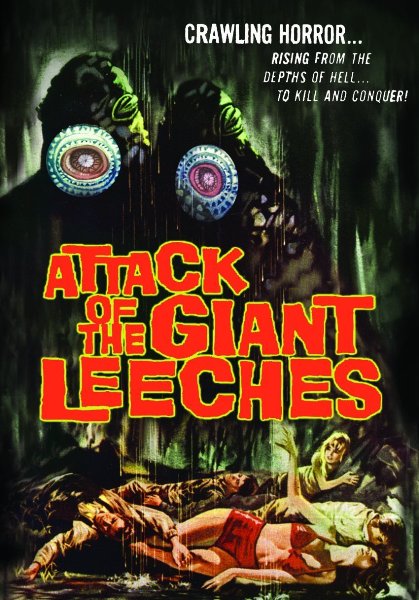I’ve decided that my current “thing” is going to be browsing through my movie collection and watching any that I haven’t watched before. You may scoff at the idea that I might buy a product and then never use it, but I’m both very materialistic and busy. Well, “busy.” The idea here is that I’m going to write a thing after every so many movies and then fire off a couple paragraphs about each.
Anyway, I’m sure this won’t last for long. We all know that I have a habit of abandoning projects really quickly. But at least I’ll get one or two articles out of it.
This batch comes from a Midnight Horror collection, the likes of which you will find in the $5 garbage DVD bin at Wal-Mart. It contains a whopping eight films, and as you may have already guessed, they’re pretty much trash as far as cinema goes. Let’s take a closer look at a handful of them, shall we?
#1 – Decadent Evil
 Firstly, let’s assume that I didn’t choose this one to start with because it’s pretty close to Resident Evil. (It’s also known as Decadent Evil Dead in the UK, which is just.. ugh.) Also, assume that I wasn’t growling “Decadent Eee-vil” and then giggling to myself constantly between the time when I chose to watch the movie and when I actually sat down to watch it.
Firstly, let’s assume that I didn’t choose this one to start with because it’s pretty close to Resident Evil. (It’s also known as Decadent Evil Dead in the UK, which is just.. ugh.) Also, assume that I wasn’t growling “Decadent Eee-vil” and then giggling to myself constantly between the time when I chose to watch the movie and when I actually sat down to watch it.
Decadent Evil is 67 minutes long. That includes the intro and ending credits. I’d wager that the actual film portion is roughly 50 minutes. This is good for me, as my attention span dwindles by the day.
This film is about vampires. Specifically, a trio of lady vampires that live in a gaudy LA mansion and work as strippers. They also have a little pet lizard-man, Marvin, which they refer to as a homunculus and keep in a birdcage. The head vampire is nearing the milestone of having sucked the blood of 10,000 humans, which will apparently make her an invincible Vampire Queen. Sure, why not? At least she doesn’t get magical sparkle powers.
But then a vampire hunter shows up and, with the “help” of the youngest vampire and her boyfriend, locates and defeats the boss vampire. He dies during the process, but ends up turning her into a homunculus. The final scene is of Marvin porking her in the cage while she makes a noise that sounds an awful lot like “Ow. Ow. Ow. Ow Ow.”
While not egregiously terrible, Decadent Evil is not a good movie. Even the nudity is shoddy.
#2 – Meridian
 This seemed to be the most boob-filled flick of the bunch, based on the description on the back of the case, so it got second billing. In that regard, I was not disappointed. There was ample boobage on display indeed.
This seemed to be the most boob-filled flick of the bunch, based on the description on the back of the case, so it got second billing. In that regard, I was not disappointed. There was ample boobage on display indeed.
Please note that this film has the subtitle “Kiss of the Beast” on occasion. This was not one of those occasions.
The movie’s protagonist is Catherine, who moves into a castle in Italy because reasons. Her friend comes to visit and invites a bunch of carnies over and then the carnies drug and rape the both of ’em. Whoops. Also the one that has his way with Catherine is a were-sasquatch. Double whoops!
I don’t know how it turns out because I fell asleep shortly after that point. I do know that there was a ghost of a dead girl, the were-sasquatch was cursed and also knew about a secret passage in the castle that led to Hell apparently, and… Yeah, that’s all I got from the few moments that I drifted back into consciousness.
Meridian, at least what I saw of it, is a much better movie than Decadent Evil. I guess it must have had some people who knew anything about making movies on staff. Sherilyn Fenn is the main character, and she’s a… known actress. It’s still not one I would recommend, because the plot was super dumb, but I could see someone defending it as a decent movie.
Confession: I did go back and watch the rest… It turns out that were-sasquatch was also a ghost. With an evil twin. And the trick to breaking were-sasquatch’s sasquatch-ghost curse was to have him murder said evil twin. If it weren’t so slow and romantic, this could have really been an awesomely stupid movie. As it is, it’s just stupid.
#3 – Backwoods Bloodbath – Curse of the Black Hodag
 Where the heck do I even start with this one? Let’s start with the fact that this film is amateur-hour in every way. The story follows the same plot beats as every other slasher, the actors are mediocre at best, and the camerawork is all over the place. I suppose the gore is okay.
Where the heck do I even start with this one? Let’s start with the fact that this film is amateur-hour in every way. The story follows the same plot beats as every other slasher, the actors are mediocre at best, and the camerawork is all over the place. I suppose the gore is okay.
One might assume that the director had a glut of red corn syrup, and said to his friends “Welp, I guess we’d better make a slasher movie.”
As the story so often goes, a group of teens goes into the woods for a weekend getaway. Despite a token warning from a local hillbilly, they press on and are subsequently picked off one-by-one by a forest monster. The twist is that in addition to the monster, one of the teens is also a psychopathic killer. So I guess that’s unique. It’s normally only one of the two.
The monster is a big let down. Called a Hodag, the “beast” is really just a dude dressed all in black with predator dreadlocks. It’s given a little backstory about how it has evolved over the years into the shape of its prey (which is people), but that’s still just a lame handwaving for not being able to come up with some decent creature effects. It’s especially disappointing when you find out what a Hodag is actually supposed to look like.
At least the Hodag’s story is kind of neat. The locals are used to a couple people going missing every year, as the Hodag will kill a few folks and store their bodies away for the winter (like the nagging grasshopper). But it just so happens that now, it’s killing at an alarming frequency because it’s got a baby on the way. It’s eating for two now! How sweet! Better than just killing because it’s a mindless monster, at any rate.
Just so that we can tie this one into the common thread of “how’s the nudity?”, I feel obligated to mention that during one of the sex scenes, there is a still, close-up shot of a single breast for about five seconds. The editing in this film is baffling. Also the Hodag keeps one of the girls tied up and alive in his lair, but by the time she is found, it has chopped off her breasts. That’s… not a thing I’ve ever seen before. Backwoods Bloodbath goes to some really strange places.
I can’t in good faith recommend this to anyone. It’s not even amusingly terrible. It’s just terrible. The one saving grace for me is that I was playing Chibi-Robo! Zip-Lash throughout, so it didn’t really feel like I’d wasted those 90 minutes.
#4 – Zombie Dearest
 The last one on today’s lineup, as absolutely the best. By a long shot. A really, really long shot.
The last one on today’s lineup, as absolutely the best. By a long shot. A really, really long shot.
I have no idea why this was billed as a horror film, or why anybody suggests that it is scary in the least. Because it is not. The last three minutes of the film might be construed as somewhat frightening, but even then, that’s being pretty generous.
I don’t know. Maybe it’s my fault. Maybe I’ve become so desensitized to zombies that I cannot fathom how anyone could see them as something frightening.
Anyway, this movie is totally a comedy. Like, it’s not hilarious or anything, but it made me laugh out loud a few times. And, of course, I was laughing with this movie. If I chuckled while watching the other three, I definitely would have been laughing at them.
Zombie Dearest tells the story of a couple, Gus and Deborah, who are going through some severe marital difficulties. They end up moving out to an old family home in the country, and Gus digs up a dead body while trying to replace his septic tank. By some manner of Zombie Wang Magic (yes, it’s a thing), the body comes to life and starts following Gus’s orders.
The zombie, Quinto, puts even more strain on Gus and Deborah’s relationship at first, but eventually they patch things up and grow closer than ever when they decide that they need to re-kill Quinto.
Things do take a turn for the worse near the end, but unlike every other zombie comedy ever, it doesn’t dip into bleak, depressing territory in the third act and forget that it’s supposed to be funny. No, it hangs onto its somewhat humorous tone until it absolutely must push the plot to its climax. But it quickly invokes Zombie Wang Magic a second time to undo the damage and give the characters their (presumably) happy ending.
I am fully willing to put myself out there and suggest that Zombie Dearest is actually a good movie. It’s not a life-altering film, but I was entertained and impressed but it. It may be due to the fact that I was expecting another 90 minutes of garbage, but there’s also a chance that it really is decent. Even if you’re fully burned-out on zombies, I’d heartily recommend watching it. (Fair warning: it’s got only a 10% rating on Rotten Tomatoes.)


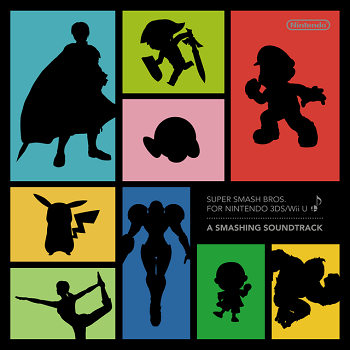
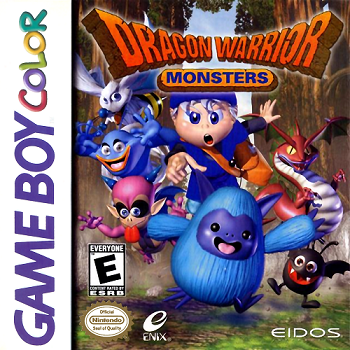 Long ago, before Enix was able to claim the Dragon Quest’s rightful title overseas, there was a game called Pokémon. It was a game about collecting and battling monsters, and it was a massive hit. A worldwide phenomenon that continues to be a force to reckon with to this day. Of course, back then, imitators immediately sprang out of woodwork from every angle. Many were new franchises, and plenty just shoehorned monster collection/battles into existing franchises. Not a single one of them ever grabbed hold of me like Dragon Warrior Monsters did.
Long ago, before Enix was able to claim the Dragon Quest’s rightful title overseas, there was a game called Pokémon. It was a game about collecting and battling monsters, and it was a massive hit. A worldwide phenomenon that continues to be a force to reckon with to this day. Of course, back then, imitators immediately sprang out of woodwork from every angle. Many were new franchises, and plenty just shoehorned monster collection/battles into existing franchises. Not a single one of them ever grabbed hold of me like Dragon Warrior Monsters did.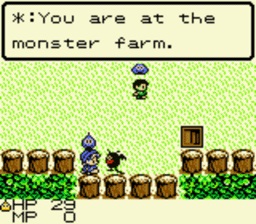
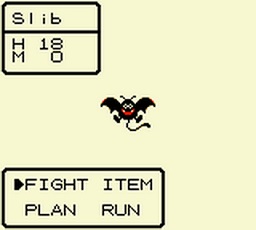
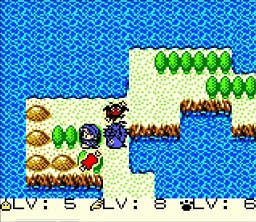
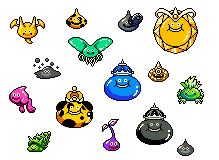
 Let’s get this out there right away: this is a children’s movie. It is classified as a horror film, but all the main characters are children, there is a very small amount of violence, and there is no nudity in the least (probably for the best, in this case). I did not realize this until about a half-hour into the film.
Let’s get this out there right away: this is a children’s movie. It is classified as a horror film, but all the main characters are children, there is a very small amount of violence, and there is no nudity in the least (probably for the best, in this case). I did not realize this until about a half-hour into the film. Firstly, let’s assume that I didn’t choose this one to start with because it’s pretty close to Resident Evil. (It’s also known as Decadent Evil Dead in the UK, which is just.. ugh.) Also, assume that I wasn’t growling “Decadent Eee-vil” and then giggling to myself constantly between the time when I chose to watch the movie and when I actually sat down to watch it.
Firstly, let’s assume that I didn’t choose this one to start with because it’s pretty close to Resident Evil. (It’s also known as Decadent Evil Dead in the UK, which is just.. ugh.) Also, assume that I wasn’t growling “Decadent Eee-vil” and then giggling to myself constantly between the time when I chose to watch the movie and when I actually sat down to watch it. This seemed to be the most boob-filled flick of the bunch, based on the description on the back of the case, so it got second billing. In that regard, I was not disappointed. There was ample boobage on display indeed.
This seemed to be the most boob-filled flick of the bunch, based on the description on the back of the case, so it got second billing. In that regard, I was not disappointed. There was ample boobage on display indeed. Where the heck do I even start with this one? Let’s start with the fact that this film is amateur-hour in every way. The story follows the same plot beats as every other slasher, the actors are mediocre at best, and the camerawork is all over the place. I suppose the gore is okay.
Where the heck do I even start with this one? Let’s start with the fact that this film is amateur-hour in every way. The story follows the same plot beats as every other slasher, the actors are mediocre at best, and the camerawork is all over the place. I suppose the gore is okay. The last one on today’s lineup, as absolutely the best. By a long shot. A really, really long shot.
The last one on today’s lineup, as absolutely the best. By a long shot. A really, really long shot.
